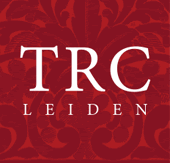The Hazaras claim to descend from the Mongol army that occupied the lands of what is now Afghanistan in the thirteenth century. Indeed, the (Persian) language spoken by the Hazaras still contains many Mongolian words. They used to occupy a much larger part of the country, but for centuries they have been pushed back into the mountains of Central Afghanistan (Hazarajat) by the Pashtuns, who gradually replaced them along the foothills of the Hindu Kush mountains.
In the West they became known by the novel The Kite Runner, by Khaled Hossaini (2003). Most of the Hazaras are Shi'ites, which sets them apart from most of the other ethnic groups in Afghanistan, who are Sunnites.
 Group of Hazaras, Afghanistan, 1916/17. From Niedermayer 1924, Abb. 185. The photograph was taken by the German mission sent to Afghanistan during the First World War with the express purpose of inciting the Afghans against the British rulers in India.Hazara dress for men traditionally included a pair of trousers (in the past made of barrak, a woollen fabric for which the Hazaras were famous), a cotton shirt (kamiz; pirahan), a coat or kaftan (often a form of the North Indian choga), and, from the mid-twentieth century, an embroidered skull cap. In the past, Hazara men used to wear a plain cap with a fur rim (see illustration). A belt (kamari) or cloth sash is often wrapped around the waist. The men may wear a turban (lungota) over the cap and a shoulder blanket of cotton (sal), or a soft fulled woollen material (sal-i hazaragi) depending on the season. They may also wear colourful, knitted socks.
Group of Hazaras, Afghanistan, 1916/17. From Niedermayer 1924, Abb. 185. The photograph was taken by the German mission sent to Afghanistan during the First World War with the express purpose of inciting the Afghans against the British rulers in India.Hazara dress for men traditionally included a pair of trousers (in the past made of barrak, a woollen fabric for which the Hazaras were famous), a cotton shirt (kamiz; pirahan), a coat or kaftan (often a form of the North Indian choga), and, from the mid-twentieth century, an embroidered skull cap. In the past, Hazara men used to wear a plain cap with a fur rim (see illustration). A belt (kamari) or cloth sash is often wrapped around the waist. The men may wear a turban (lungota) over the cap and a shoulder blanket of cotton (sal), or a soft fulled woollen material (sal-i hazaragi) depending on the season. They may also wear colourful, knitted socks.

A traditional outfit for an Hazara woman consists of trousers, a calf-length dress with long, full sleeves, very wide at the waist, plus a head covering. Sometimes a waistcoat is worn, which is decorated with buttons, beads, silver coins and seashells. The head cloth is sometimes folded into a thick, flat pad on top of the head, with the ends forming a sort of veil at the back of the neck. In the past, some Hazara women would have covered their face with a ruband (face veil).
Modern Hazara dresses normally have sleeves with narrow cuffs and they end at the knee or halfway along the calves. Festival versions tend to be made out of purple velvet, but other colours (red) are also worn.


